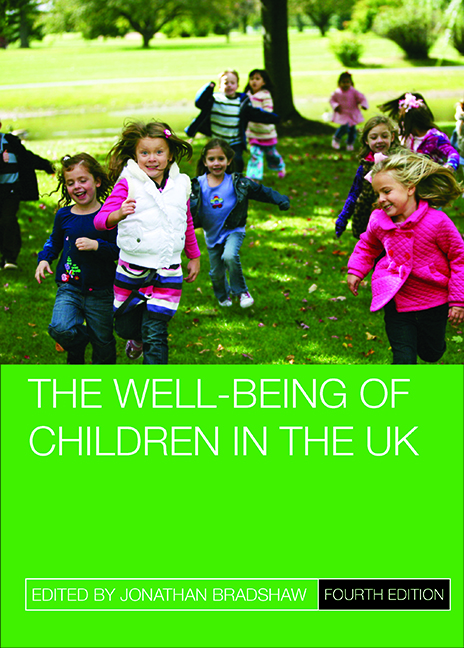Book contents
- Frontmatter
- Contents
- List of figures and tables
- List of abbreviations
- Notes on contributors
- Acknowledgements
- One Introduction
- Two Demography of childhood
- Three Child poverty and deprivation
- Four Physical health
- Five Subjective well-being and mental health
- Six Education
- Seven Housing and the environment for children
- Eight Children’s time and space
- Nine Children and young people in care and leaving care
- Ten Child maltreatment
- Eleven Childcare and early years
- Twelve Children, crime and correction
- Thirteen Conclusion
- Bibliography
- Index
Five - Subjective well-being and mental health
Published online by Cambridge University Press: 01 September 2022
- Frontmatter
- Contents
- List of figures and tables
- List of abbreviations
- Notes on contributors
- Acknowledgements
- One Introduction
- Two Demography of childhood
- Three Child poverty and deprivation
- Four Physical health
- Five Subjective well-being and mental health
- Six Education
- Seven Housing and the environment for children
- Eight Children’s time and space
- Nine Children and young people in care and leaving care
- Ten Child maltreatment
- Eleven Childcare and early years
- Twelve Children, crime and correction
- Thirteen Conclusion
- Bibliography
- Index
Summary
Key statistics
• Children in the UK fare poorly (ranked between 11th and 14th in a sample of 15 countries) in international comparisons of children’s overall subjective well-being.
• Children's happiness with their material living standards and friends are relatively high in the UK; their happiness with their appearance is very low.
• Around 1 in 10 children aged 5-16 had a clinically diagnosed mental disorder in 2004.
• Conduct disorders (5.8%) and emotional disorders (3.7%) are the two most common forms of disorder.
• Boys are more likely than girls to have a mental disorder.
• Rates of most mental disorders tend to increase with age through childhood, adolescence and into adulthood, but exceptions are separation anxiety disorder and attention deficit hyperactivity disorder (ADHD) that decrease.
• There were 188 suicides and undetermined deaths of 10- to 19-year-olds in the UK in 2012/13, a rate of around 25 per million of the population.
• Rates of suicides and undetermined deaths are lowest in England/Wales and highest in Northern Ireland.
• Males in this age group are more than four times more likely to die as a result of suicide or undetermined death than females.
Key trends
• Happiness with schoolwork appears to have increased from 2009/10-2012/13, while happiness with friends appears to have decreased across this time frame.
• Older children tend to report lower levels of subjective well-being than younger children.
• The picture of long-term trends in mental ill-health is complex and varies according to age group, gender and category of mental health problem.
• Within England and Wales, the suicide rates either declined slightly or remained relatively stable between 1985 and 2012. Rates for Scotland are higher but have seen some decreases in recent years. The suicide rate among young people in Northern Ireland has seen an increase up to 2012.
- Type
- Chapter
- Information
- The well-being of children in the UK (4th edition) , pp. 123 - 148Publisher: Bristol University PressPrint publication year: 2011
- 1
- Cited by



